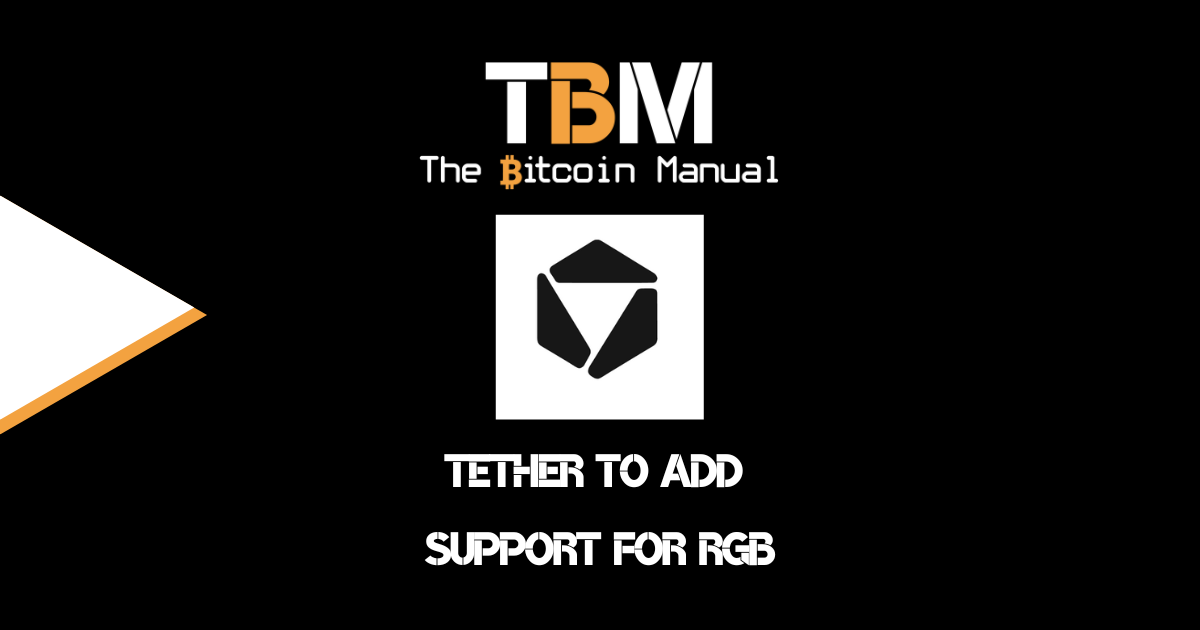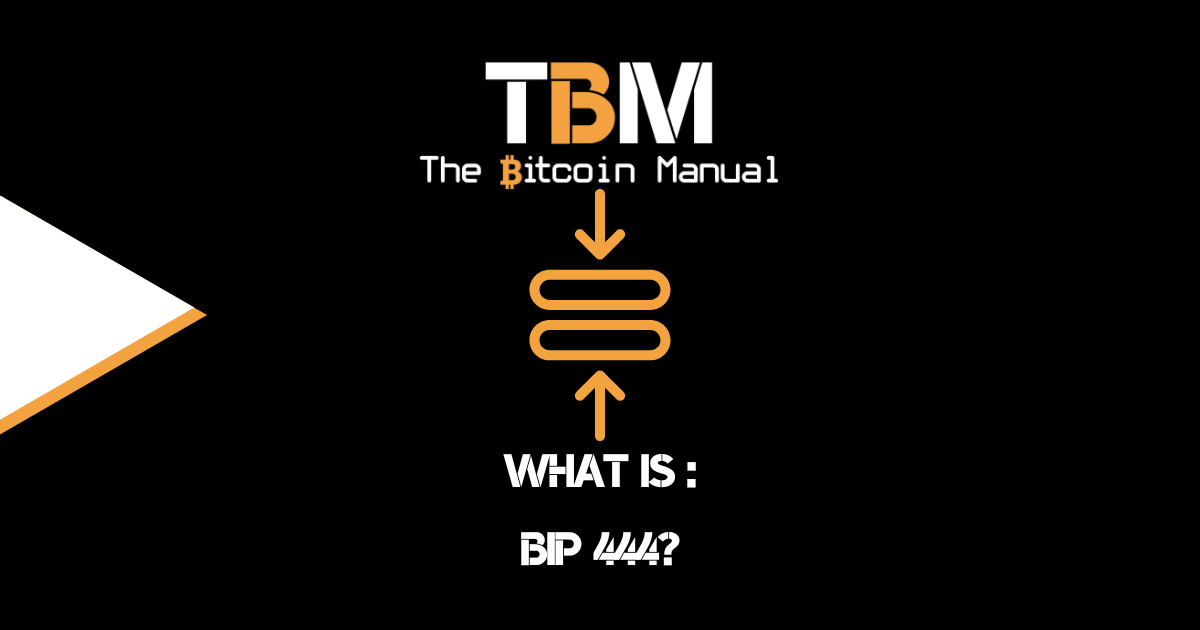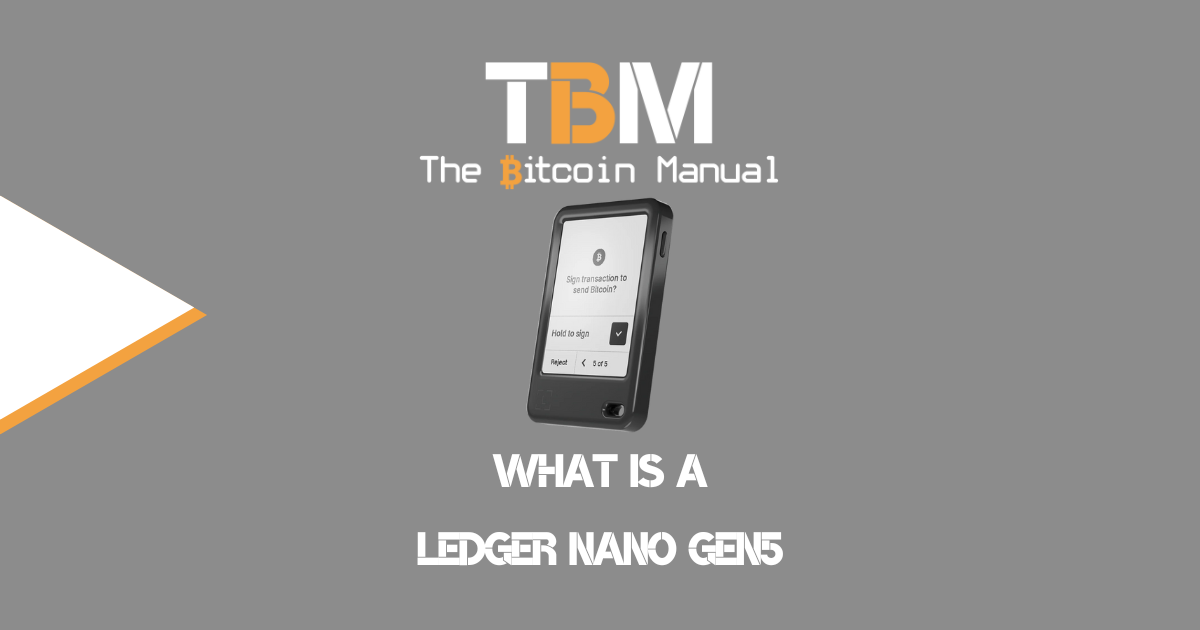It’s only been a month since the RGB mainnet went live, and we haven’t even seen a single exchange support it or establish a wallet. Yet, Tether, the world’s largest stablecoin issuer, has revealed plans to launch USDT directly on the RGB protocol.
It may come as a surprise to those who don’t pay attention that this fledgling protocol can already attract attention from one of the largest asset issuers in the space.
Why would they choose this protocol over another L1 blockchain? Well, Tether have had its eye on RGB for a while. Bitfinex, a company part of the Tether-verse, has had a team working on RGB integration and RGB-related tools, and even launched an RGB wallet in Iris wallet.
Between RGB and Taproot Assets, Tether hopes it will be the third time lucky in launching a stablecoin market tied to Bitcoin, as they did with Omni and Liquid, both of which didn’t gain much traction.
USDT Meets Bitcoin..AGAIN!
Tether plans to roll out its USDT token on RGB, a smart-contract and asset-issuance protocol anchored to Bitcoin that’s compatible with the Lightning Network, expanding native stablecoin support on the world’s largest blockchain ecosystem and its various layers.
“Bitcoin deserves a stablecoin that feels truly native, lightweight, private, and scalable. With RGB, USD₮ gains a powerful new pathway on Bitcoin, reinforcing our belief in Bitcoin as the foundation of a freer financial future.”
Paolo Ardoino, CEO of Tether.
Understanding RGB: The Protocol That Changes Everything
To appreciate the significance of this announcement, it’s essential to understand what RGB brings to Bitcoin. RGB is not just another layer-2 solution—it’s a shift in how we think about smart contracts and asset issuance on Bitcoin.
What Makes RGB Tether Different?
RGB recently reached mainnet with its 0.11.1 release and has been designed to make Bitcoin more than just a store of value. By enabling private, scalable, and user-controlled issuance of assets, RGB opens the door for stablecoins to exist natively on Bitcoin.
The RGB protocol operates on several groundbreaking principles:
- Client-Side Validation: Unlike traditional blockchain smart contracts that execute on-chain, RGB moves smart contract execution and data storage off-chain while using Bitcoin’s blockchain purely for commitment and finality. This approach dramatically reduces on-chain footprint while maintaining security.
- Privacy by Design: No chain analysis is possible due to the absence of a transaction graph in RGB transactions. This means USDT transactions on RGB would offer unprecedented privacy compared to other blockchain implementations.
- Lightning Network Compatibility: RGB leverages the Lightning Network for instant, low-cost transactions, making micropayments and high-frequency trading viable with USDT on Bitcoin.
- Scalability Without Compromise: RGB can scale in terms of transaction throughput, data size and network size. It doesn’t keep any data on-chain (in any blockchain); it is sharded from day 1 and is fully interoperable with layer 2 scalability solutions.
Technical Innovation Behind RGB
Using RGB requires no protocol changes to the Bitcoin blockchain or LN. The protocol functions as a version of a Directed Acyclic Graph (DAG), making it compatible with existing Bitcoin infrastructure while adding programmable capabilities.
RGB keeps smart contract code and data off-chain to conserve on-chain space while ensuring security, enhancing operational speed, and reducing development complexity. RGB utilises blockchain as a state commitment layer that is Turing-complete and capable of supporting simple language operations.
The Implications: Why This Matters for Bitcoin and Crypto
This development represents a fundamental evolution in Bitcoin’s utility. While Bitcoin has primarily served as digital gold—a store of value—the integration of native stablecoins could transform it into a comprehensive monetary network.
Enhanced User Experience
The integration promises several user experience improvements:
- Unified Wallet Experience: Users will be able to hold and transfer USD₮ alongside their Bitcoin in the same wallet, enjoy the benefits of private and sovereign transactions, and even send and receive value offline.
- Lightning Network Benefits: Users can leverage Lightning’s instant settlement and minimal fees for USDT transactions, making Bitcoin competitive with traditional payment systems.
- Privacy and Control: Unlike USDT on other chains, RGB-based USDT offers enhanced privacy and eliminates the need for intermediary bridges or custodial services.
Market Impact and Adoption
Tether claims that native integration of USDT on Bitcoin would open new possibilities for stable, dollar-denominated payments secured by the Bitcoin network.
This could have several cascading effects:
- Institutional Adoption: Companies seeking Bitcoin treasury strategies could now hold both BTC and stable USD-denominated assets in the same infrastructure, reducing complexity and risk.
- DeFi on Bitcoin: Native stablecoin support could catalyse the development of decentralised finance applications directly on Bitcoin, an area that has lagged compared to Ethereum and other smart contract platforms.
- Reduced Alt Chain Dependency: Currently, most USDT volume occurs on Ethereum and Tron. Native Bitcoin support could reduce this dependency and distribute stablecoin activity across more resilient infrastructure.
Technical Deep Dive: How RGB-Based USDT Works
I’ve said it before, and it’s becoming clearer by the day:
— BTChick (@bt_chick) August 29, 2025
Bitcoin is the only public blockchain we’ll ever need. @Tether_to's decision to issue USDT on #RGB is strong validation — and RGB enables far more than stablecoins.
Dig deeper, and you’ll see why everything else is… pic.twitter.com/YvLOBCFUoL
Asset Issuance and Management
With this release, users can create, send, and receive assets on Bitcoin, use programmable contracts, and transfer tokens over Lightning with low fees.
For USDT, this means:
- Issuance: Tether can mint new USDT tokens directly as RGB assets, backed by the same USD reserves that secure USDT on other networks, thereby avoiding the use of bridges or dealing with cross-chain risk.
- Transfer Mechanism: USDT transfers occur through RGB’s client-side validation system, with Bitcoin transactions serving as commitment anchors.
- Lightning Integration: Users can open Lightning channels with RGB-based USDT, enabling instant, low-cost payments.
- Privacy Features: Transaction details remain private between participating parties, with only commitments recorded on Bitcoin’s blockchain.
Security Model
The security model combines Bitcoin’s proven consensus mechanism with RGB’s innovative validation system:
- Bitcoin Security: All RGB transactions are ultimately secured by Bitcoin’s hash rate and decentralisation.
- Client-Side Validation: Each participant validates only the transactions relevant to them, improving both privacy and scalability.
- Cryptographic Commitments: Bitcoin transactions contain cryptographic commitments to RGB state changes without revealing transaction details.
We love seeing Tether embracing client-side validation protocols like Taproot Assets and RGB! As the first self-custodial wallet and swapping tech for Taproot Assets, we are ready 🫡 https://t.co/XkNWIHAwX6
— Joltz (@Joltz_btc) August 29, 2025
Broader Context: Tether’s Strategic Evolution
This announcement comes as part of Tether’s broader strategy to optimise its blockchain presence. The firm has also begun phasing out support for less scalable blockchains, including Algorand, EOS, and Omni, by September 2025. This consolidation suggests Tether is focusing on the most robust and scalable platforms for long-term growth.
Challenges and Considerations
While this development is groundbreaking, several challenges and considerations remain:
- Technical Complexity: RGB represents a significant departure from traditional blockchain architectures. The client-side validation model, while powerful, introduces complexity that could initially limit adoption among less technical users.
- Ecosystem Maturity: The RGB protocol, launched in July 2025, is still relatively new. While it has reached mainnet, the ecosystem of supporting tools, wallets, and applications is still developing.
- Regulatory Landscape: As governments worldwide grapple with stablecoin regulation, the introduction of native Bitcoin stablecoins could face regulatory scrutiny, particularly regarding compliance and oversight mechanisms, especially given the privacy benefits of client-side settlement.
- Competition and Adoption: Success will depend on ecosystem adoption. Wallet providers, exchanges, and other infrastructure providers must integrate RGB support for the technology to reach its full potential.
Potential Catalysts or Limitations for Growth
Just because Tether is backing RGB doesn’t make this a slam dunk for the protocol to start to erode market share from other chains.
Several factors could accelerate adoption:
- Lightning Network Maturity: As Lightning infrastructure improves, RGB-based transactions become more accessible
- Wallet Integration: Native support in popular Bitcoin wallets would dramatically improve user experience
- Institutional Demand: Corporate treasuries seeking Bitcoin exposure with USD stability options
- Developer Innovation: New applications built specifically for RGB-native assets
- Exchange support: Will the deepest fiat to Bitcoin and stablecoin markets support native withdrawals to RGB?
- Interoperability: How will RGB-20 Tether tokens find markets where they can bridge between existing pools of Tether on other chains?
The Stablecoin Standard
Some will see the addition of Tether to Bitcoin protocols like RGB and Taproot Assets as a distraction from the main goal, which is onboarding users to Bitcoin, and getting them comfortable with the idea of using it as a store of value and medium of exchange.
But anyone who has tried to orange pill a friend or family member will know that you can take the stubborn donkey to the water, but you can’t beat the ass to drink.
There will be a cohort of users who would like to have a Bitcoin balance and a stablecoin balance in the same wallet, and RGB can provide this as a simple and native experience.
Another positive outcome could be an increase in cash balances being converted to digital assets over time, more trading between the asset pairs, and improved P2P trading since you have two assets that can clear in near-instantaneous transactions via Lightning.
This additional trading and settlement of stablecoins could also lead to increased routing and fees for Lightning nodes.
So it’s not all bad.
While the Stablecoin standard isn’t the world we want, it’s up to the individual to decide how they want to deploy their purchasing power. While stablecoins might absorb some Bitcoin demand in the short term, this is only a stopgap, since Stablecoins can never and will never have NGU technology.




